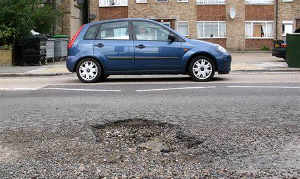2023 Toyota Prius Specs Revealed: Better in Some Ways, Worse in Others

Toyota has released more detailed specs on the new 2023 Prius hybrid.Its dimensions have changed significantly, meaning there’s less interior space than before.A new powertrain with a 2.0-liter gasoline engine means more power and better fuel efficiency than before.
Now that we’ve all reacted to the 2023 Toyota Prius hybrid’s surprising new design, it’s finally time to dig into the details of what’s underneath the redesigned body. Toyota has released full specifications covering the powertrain, dimensions, interior space, and—perhaps most importantly of all—fuel-economy ratings.
More MPGs
The most efficient version of the new Prius is the LE with front-wheel drive, which is rated at 57 mpg combined. Adding all-wheel drive drops that number to 54 mpg, and opting for the higher XLE and Limited trim levels—with their larger wheels and tires and extra equipment—pushes the combined figure down to 52 mpg with front-wheel drive and 49 mpg with all-wheel drive.
These numbers aren’t too different from the old model, which was rated at 56 mpg combined for the Eco trim, 52 mpg combined for FWD models, and 49 mpg combined for AWD models. In our 75-mph real-world highway fuel economy test, we previously achieved a result of 46 mpg for a 2017 Prius FWD and 47 mpg for a 2019 Prius AWD. We look forward to testing the new model on this same test to see what it can do.
Extra Power
The new, larger-displacement inline-four gasoline engine is mostly the reason for the new Prius’s greatly increased power output. The engine itself produces 150 horsepower and 139 pound-feet of torque, while the old Prius’ gasoline engine couldn’t even crest the 100-hp mark, rated at 96 hp. The main electric motor that serves as a motor-generator and powers the front wheels is also more powerful than before, at 111 hp, and the additional rear electric motor that powers the rear wheels in AWD models now makes 40 hp.
The drivetrain’s combined output sits at 194 hp for FWD models and 196 hp for AWD models. (The plug-in-hybrid Prius Prime is even more powerful, at 220 hp, but we don’t have full specs on that model quite yet.)
Interior and Exterior Dimensions
If you were wondering whether the Prius’s low-slung shape would affect interior space negatively, you might be disappointed—or vindicated—to find out that the new model has less passenger and cargo volume than before. Toyota claims 91 cubic feet of passenger space, down from 93 cubic feet for the old model, and just 20 cubic feet of cargo space with the seats up in XLE and Limited models. The LE has a bit more space back there, but even its 24 cubic feet of space is less than the old car’s 27 cubic feet. We’ll have to see how many carryon suitcases we can fit inside the new model, but it’s safe to assume that it’ll accommodate less than the 6 suitcases we fit in the old Prius with the seats up.
Perhaps surprisingly, the new Prius is not more aerodynamic than the old one. Toyota claims a drag coefficient of 0.27 compared with the old car’s 0.24. Dimensionally, it’s 1.1 inch longer, 0.9 inch wider, and between 1.8–2 inches lower than before, depending on trim level. The wheelbase has grown by 2 inches, which helps rear legroom increase by an inch. But headroom is down for both front- and rear-seat passengers. The Prius isn’t exactly meant for off-roading, but those with treacherous driveways will be glad to know that ground clearance is up by between 0.5 and 0.7 inch.
This content is imported from OpenWeb. You may be able to find the same content in another format, or you may be able to find more information, at their web site.



